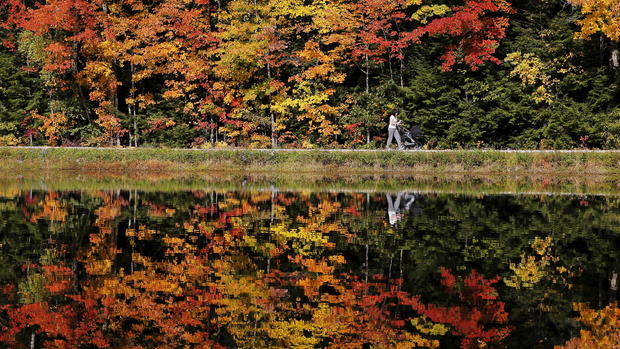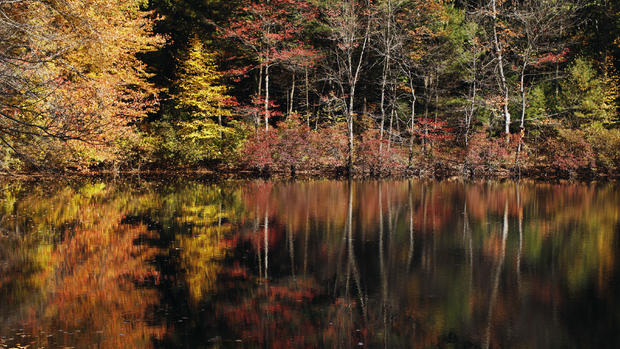Climate change could split fall foliage season in two
Every year, leaf peepers totaling in the millions flock to New England to see the bright red and orange hues of the fall foliage. The timing of these tourist visits might have to change over the course of the next century, according to a new study out of the University of Connecticut that states that climate change could significantly change the timing of the region's autumn season.
The researchers hypothesize that while northern New England would see leaves changes later in the year, the coastal southern part of the region would experience an earlier autumn.
The findings were published this week in the Proceedings of the National Academy of Sciences.
"Many other studies have shown that autumn could come later each year based on rising temperatures," lead author and Ph.D. student Yingying Xie said in a press release. "But this is the first study to show the interactions of a range of different climate variables on regional ecosystems."
While the season-to-season timing of life events in animals and plants is usually studied in the spring given how easy it is to measure the emergence of flower and leaf buds, the fall is more complex given that there is no protocol for measuring leaf color changes, Xie said.
Generally, studies of plant phenology, or key seasonal changes in a plant's life cycle, examine temperature and day length, but the study aimed to look at extreme weather events that the researchers said are key indicators of global climate change.
The researchers analyzed satellite data from an area that extended from northeastern Vermont and northwestern New Hampshire, down to Central Massachusetts and eastern Connecticut. The satellite data was recorded from 2001 to 2012. Xie and her team studied leaf color change and drop, or an indication of when a plant will enter its dormant period.
After looking at data that suggested extreme wet conditions, cold, frost, and high heat stress could lead to earlier plant dormancy, the researchers used a mathematical model to predict dormancy onsets from the years 2041 to 2050 and then from 2090 to 2099.
The impact of a shifting New England autumn could have an effect on the global carbon cycle, Xie asserted. Forests greatly reduce greenhouse effect, given that they absorb carbon dioxide from the atmosphere. If the fall started earlier in some locations, the growing season would be shorter and the region's trees would have less time to take in that extra atmospheric carbon dioxide.
"If more carbon dioxide remains in the atmosphere, it could create a negative feedback loop that accelerates climate change," she added.


